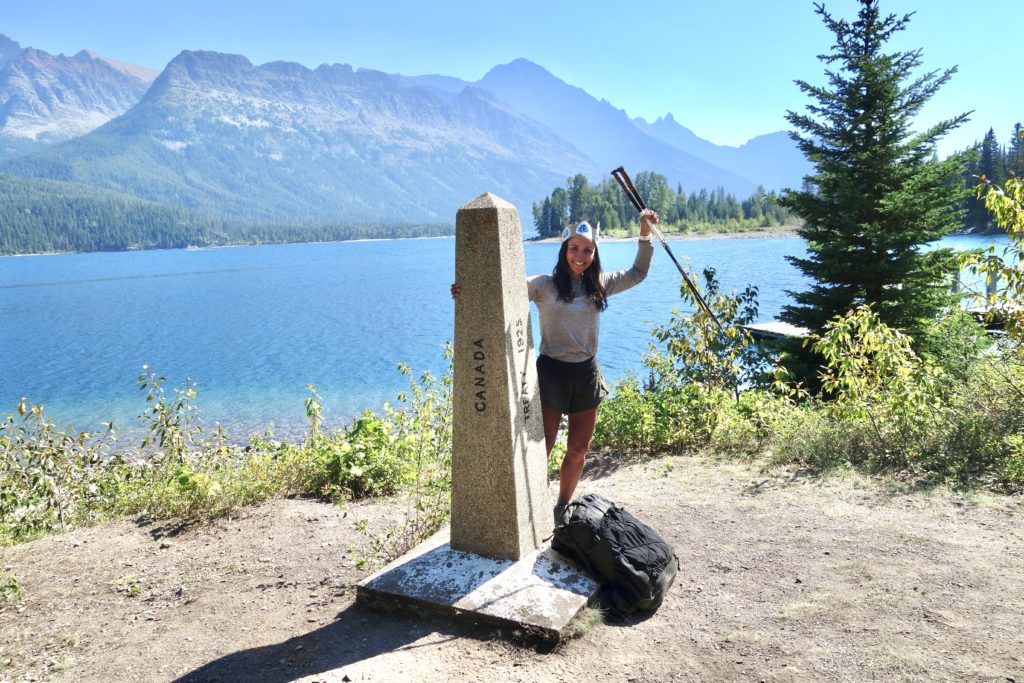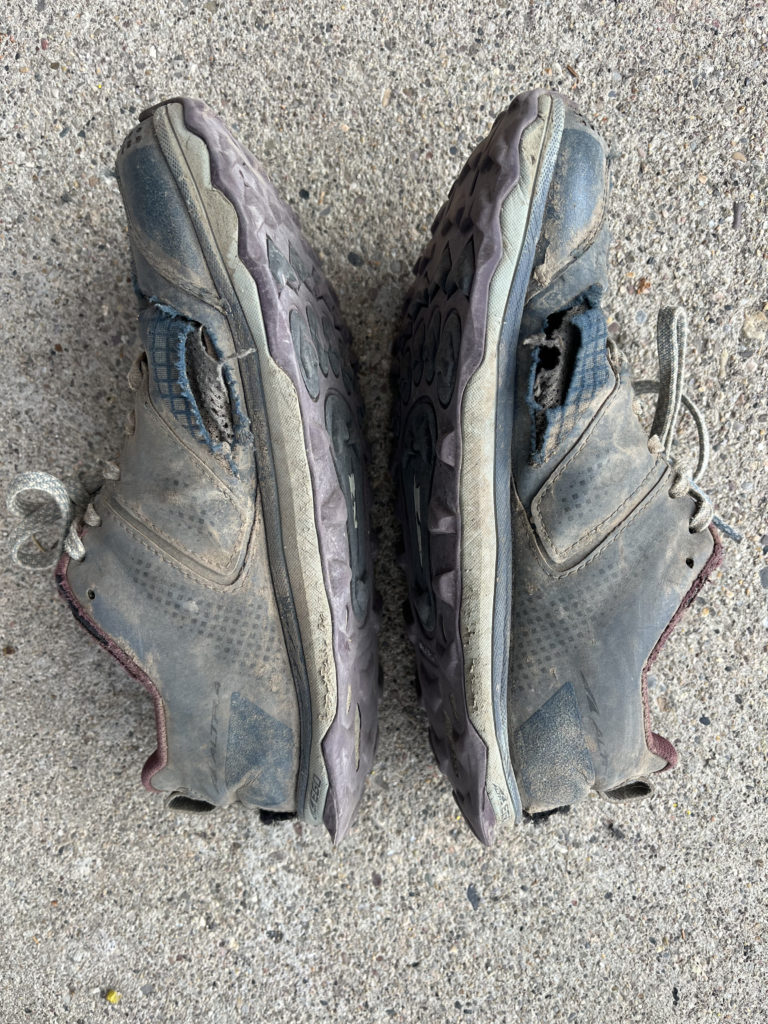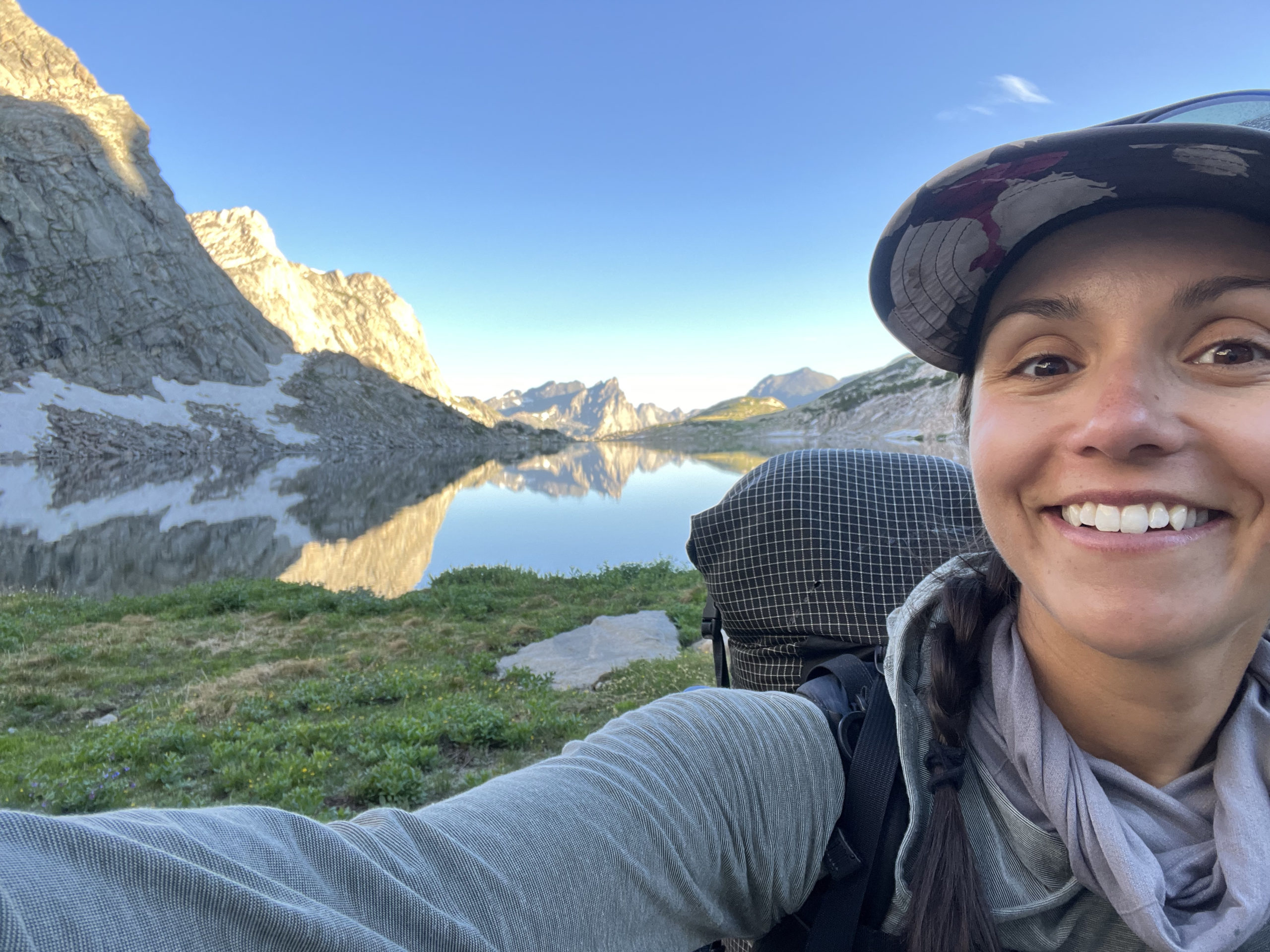About Maxine:
Maxine is a thru-hiker, runner, and plant-based athlete. Originally from New Jersey, she hiked the Appalachian Trail in 2018 and then went on to hike over 8,000 miles of America’s long trails. In 2022, Maxine completed the Continental Divide Trail, finishing up the Triple Crown of thru-hiking, a feat only 525 people have reported as of 2021. Now, she lives in the White Mountains of New Hampshire, exploring the rugged peaks and trails of the Northeast.
That’s a lot of miles hiked in five years! What was your motivation for hiking this trail?
I dreamt of hiking the Appalachian Trail during my teenage years and early twenties, fascinated by the established foot-travel only path from Georgia to Maine. I was curious if my body and brain could handle it, and, in 2018 at the age of 30, successfully hiked it. I thought I would hike it and be done, dream-fulfilled, but the experience changed me and I wanted more. Inspired by the PCT hikers I met on the AT, I hiked from Mexico to Canada through California, Oregon and Washington the following year in 2019.I fell more in love with the lifestyle of pushing myself to my limits and living in a semi-nomadic community, walking from sunrise to sunset through the most beautiful parts of the US for months on end. They say you either hike one or three of the “Triple Crown” trails and I knew I would fall into the latter camp. In 2022, I hiked the Continental Divide Trail to complete a journey I unknowingly stepped into in 2018.
Can you tell us about the Continental Divide Trail to help set the scene for your hike this year?
The Continental Divide Trail is one of eleven designated national scenic long trails in the United States. It parallels the Pacific Crest Trail, running from Mexico to Canada through New Mexico, Colorado, Wyoming, Idaho, and Montana. There are a lot of variations and alternates, but for me the trail was 2,700 miles and 412K’ vert, traveling along the Divide. I hiked through the bootheel of New Mexico, canyon walls towering above the Gila River, snowy and remote San Juan mountains, the Great Basin, Wind River Range, geothermal Yellowstone National Park, rolling hills of Idaho and Southern Montana, and Glacier National Park.
Why is the CDT catch phrase “embrace the brutality”?
On the Appalachian Trail, there’s a saying, “No Pain, No Rain, No Maine.” It’s true, there is no way to travel from Georgia to Maine without experiencing the pain of navigating rocky terrain and, in my case, 23 consecutive days of rain in Virginia. I hiked the Pacific Crest Trail in 2019, which was a historically high snow year; the High Sierra was at 175% of normal snow levels, making that June one of the hardest hiking feats of my life from Kennedy Meadows South to South Lake Tahoe. The CDT kicks everything up a notch, blending challenging variables from the AT and PCT together into a rather brutal experience! There can be limited and lower quality water, snow in the San Juans and Collegiate Peaks, lightning, grizzly territory north of Lander, Wyoming, long road walks (sometimes on interstates with 65 mph traffic), and longer hitches to more remote towns. The CDT would throw at least one wildcard at us per day whether that was in the form of lightning striking from a fast-moving storm on a 13,000’ ridge or note in FarOut Guides that a 300-lb grizzly bear was dropped off three miles from the trail.
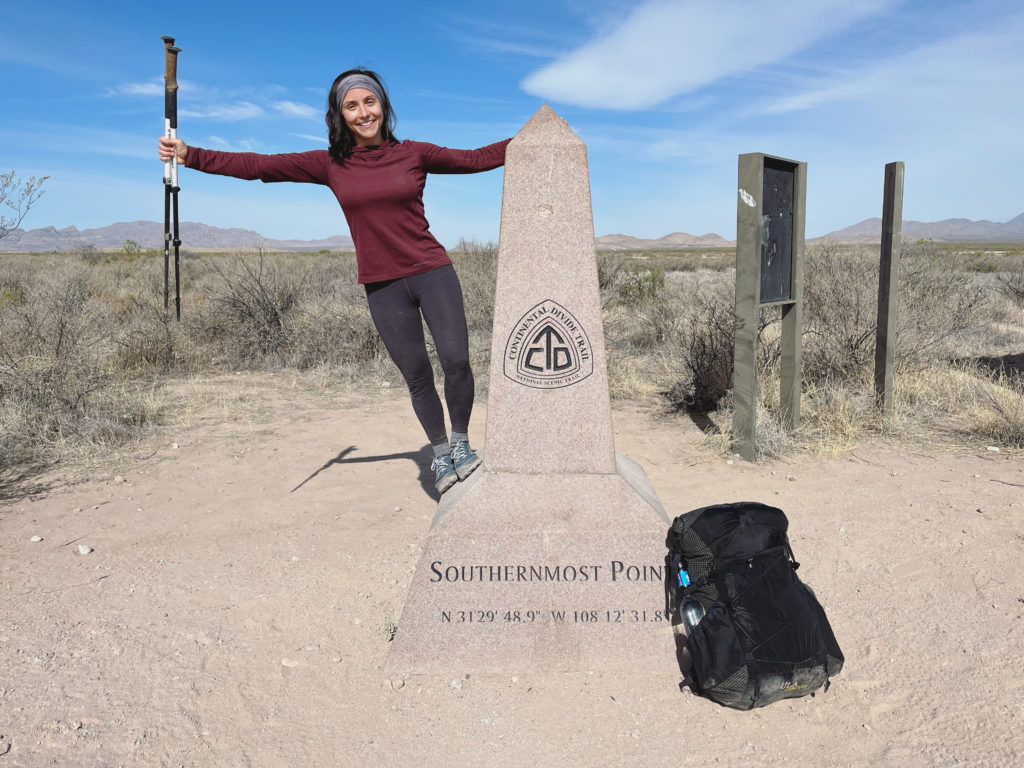
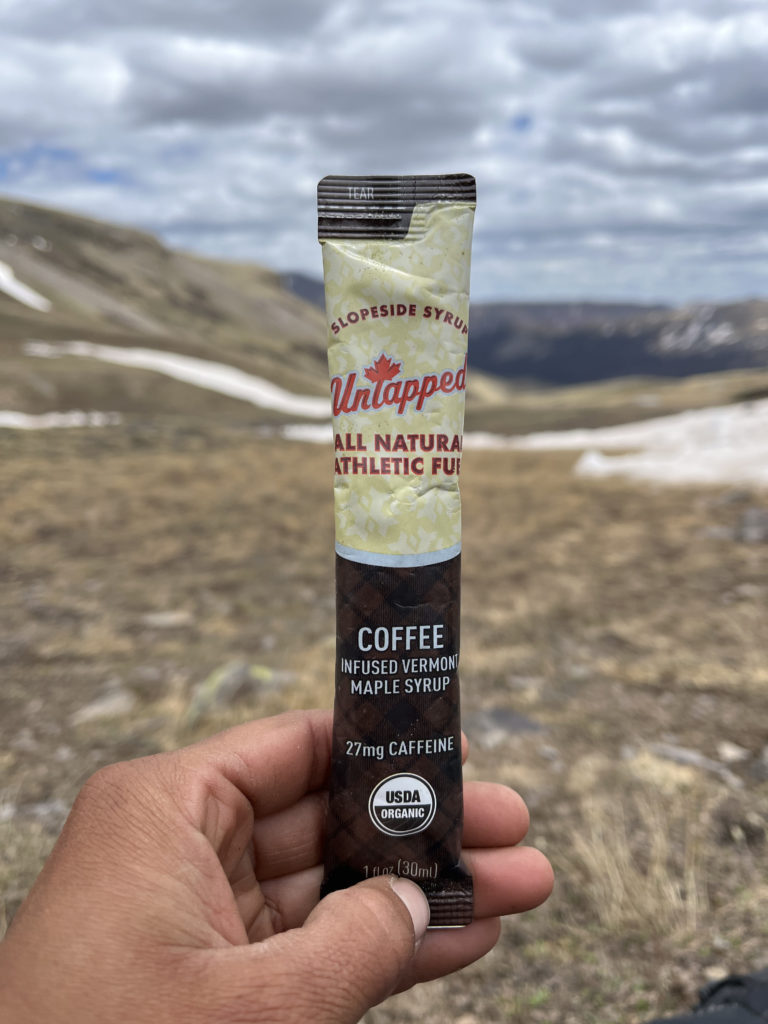
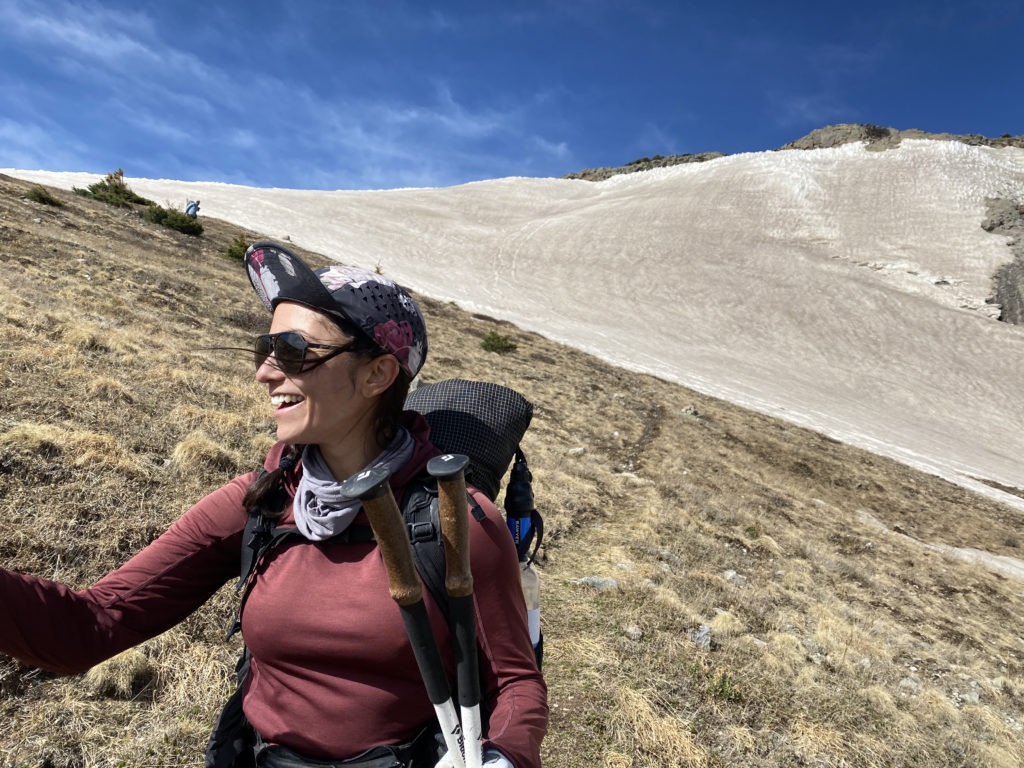
What gear did you carry? How heavy was your pack?
I have used the same gear year over year. I’m not ultra-UL, but I am not ultra-heavy either. My big four are the ULA Circuit, Big Agnes Copper Spur UL 1, Western Mountaineering 10F Versalite, and Thermarest NeoAir XLite. My base weight is around 14 pounds and, with food and water, my pack weighs about 25 pounds. One of the more controversial gear decisions I’ve made is that I have hiked the PCT, CDT, and LT without a stove. I carry a cold soak jar – either Talenti (yes, the gelato minus the icy treat) or Litesmith 16 oz. jar. I save weight and eliminate the need to use fuel canisters. This weight trade-off does come at the price of hot coffee in the morning and a warm meal at night. The UnTapped coffee waffle was a great breakfast option when I needed the calories, caffeine, and coffee taste – without a stove!
You hiked the trail alone. Were you lonely? How did you manage the solitude?
Thousands of people set out to hike the Appalachian Trail and Pacific Crest Trail each year. I’d venture to say it’s only hundreds that set out to hike the Continental Divide Trail. I started the CDT solo and hiked a lot of the miles alone, especially the first 400-miles of New Mexico. I was fortunate to hike with a trail family starting in Colorado and covering most of the trail together, becoming part of the “Bubble” once we hit the last 1,000 miles of trail to Canada. While there are fewer people on the CDT, people were more experienced having hiked the PCT or AT; i.e. small packs, fast pace, comfortable with route-finding. Even when I was with others, I spent a lot of time alone and maintained my autonomy; I “hiked my own hike” as they say. While I started solo, I feel fortunate to have created so many deep connections. The trail is mostly type two fun and it helps to share the joy and tears with others. The people are what make the experience truly special. The trails have given me so much – a better connection with myself, nature, and lifelong friends that are truly like family.
How many miles were you hiking on average?
The CDT took me 144 days to complete. This includes about 20 days off to rest (true “zero days”) as well as navigate around and return to part of the trail in NM closed due to a wildfire. When I wasn’t taking a day off, I was hiking 22 miles/day on average. I pushed myself to hike 50+ mile days twice – once in the Great Basin of Wyoming and once in the Anaconda-Pintler Wilderness in Montana. Overcoming a deep fear of hiking in the dark and camping alone opened more doors and potential to cover more miles. I’m a continuous footpath “purist” and I’ve worked really hard to keep every footstep in all of these miles connected on the trails I hike(d).
How did you prepare for the difficult days (i.e. bad weather, broken equipment, injury)?
Thru-hiking is a rare and beautiful experience filled to the brim with the highest highs and lowest lows – it’s a lot of type two fun. I am a generally fearful and risk-averse person, so thru-hiking has consistently pushed me out of my comfort zone. In my most trying, difficult moments (i.e. record rain on the AT and record snow on the PCT, lightning and grizzlies on the CDT), I talk to myself a lot (and to the bears) – lots of positive self-talk and reminding myself, out loud, to “be brave” and “stay focused” on the tasks at hand. I did a lot of mental visualization before each trail, running through my list of worries and fears and how I would address each one should they become reality, which many of them did, but, to be fair, many did not; I did not get stalked by a mountain lion or sink into quicksand. It’s amazing to find what inner reserves you can tap into if you try.
I also have a philosophy that I’ll go as far as I can but I am willing to turn back if things exceed my skill set. I’ve turned back on Mount Whitney and I turned back a few miles short of Grays Peak on the CDT due to limited time/incoming storm.
In terms of tangible, practical preparedness, I carried a Garmin In-Reach, bigger external battery (20K mAh), multiple navigation apps (FarOut Guides, Gaia GPS, Avenza), bear spray and Ursack or Bear Vault (in known bear territory), microspikes and ice axe (for snowy traverses), and World Nomads travel insurance (for the worst case scenario of needing to be extracted from the wilderness).
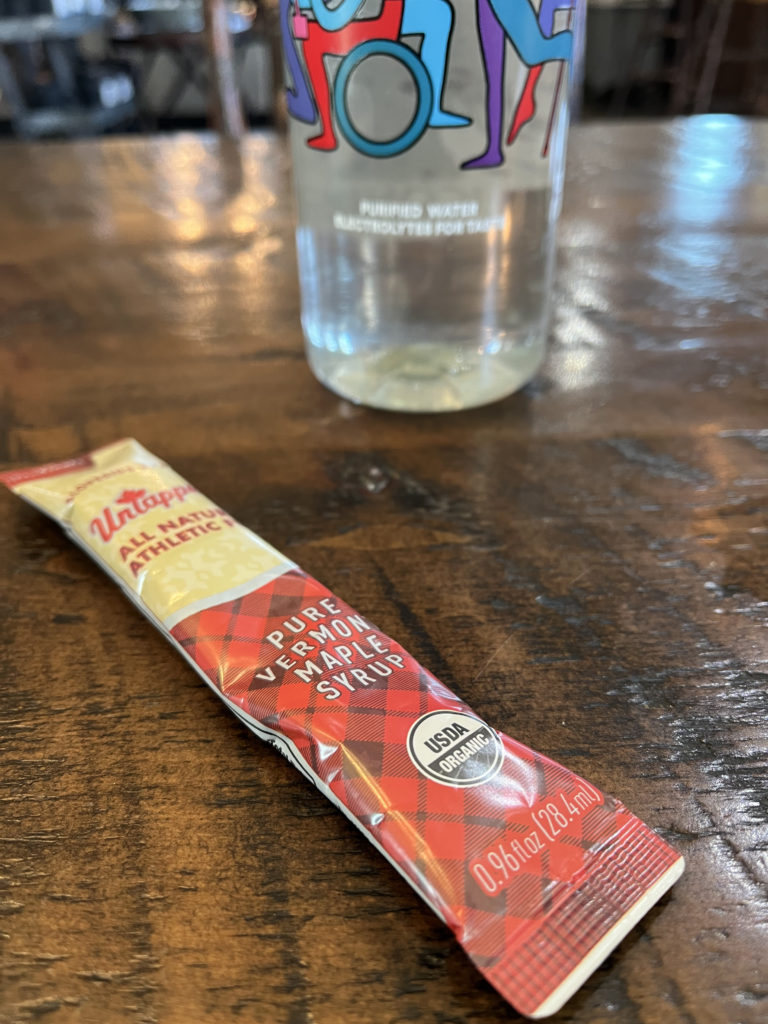
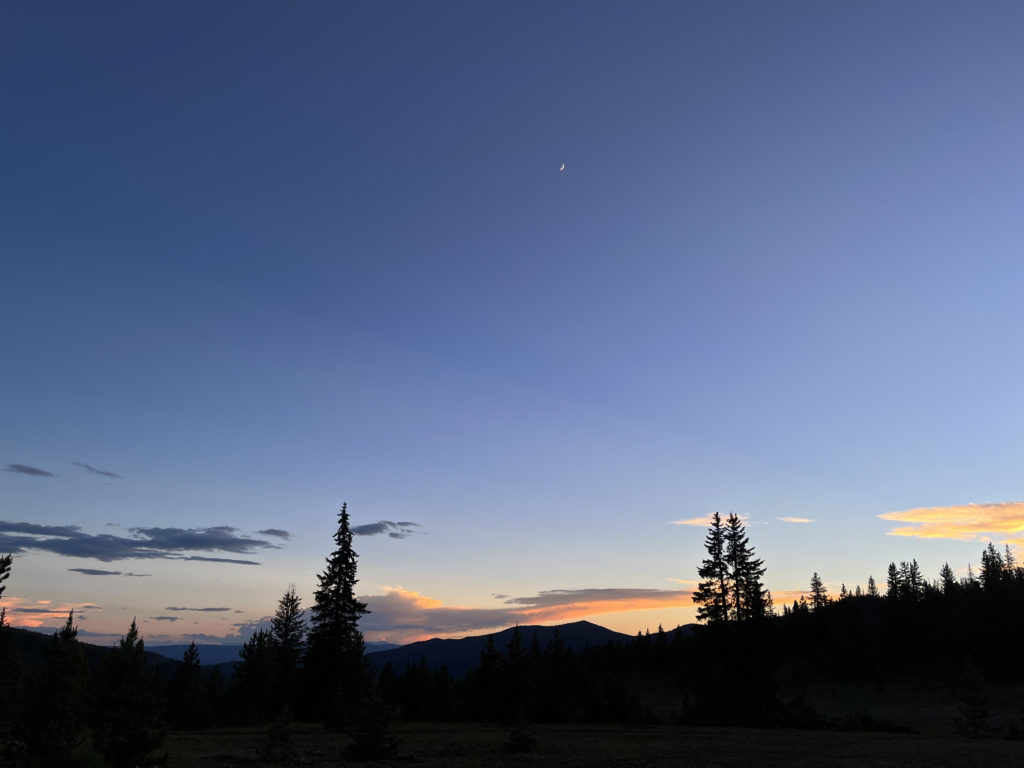
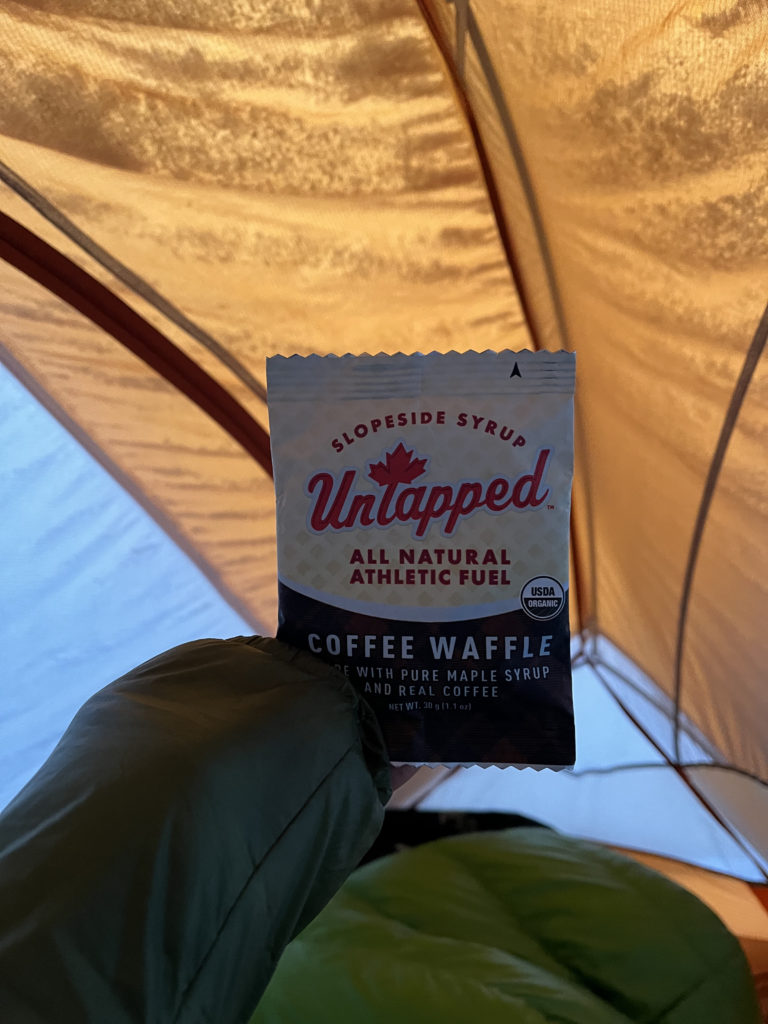
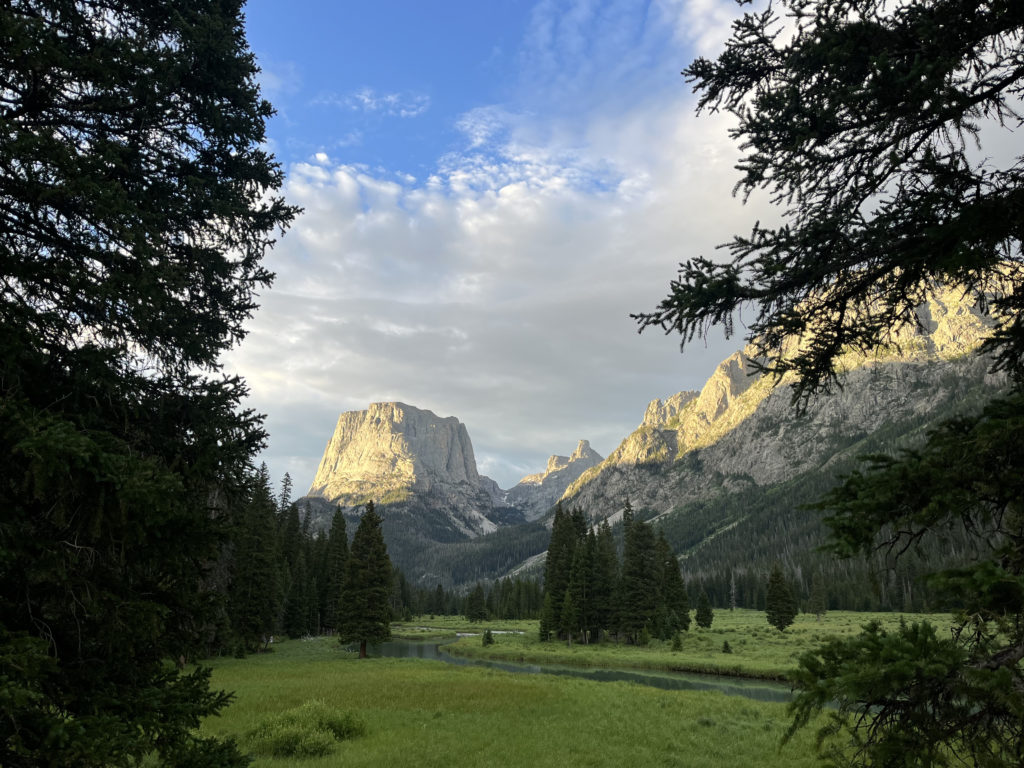
What did you eat? What did your nutrition plan look like?
I’ve been vegan for 16 years and so eating plant-based was a no-brainer for me, particularly because I had already maintained a vegan diet on prior trails. The greatest difficulty lies in small middle-of-nowhere towns (Leadore, Idaho, may have been the most bleak), but it’s always do-able. Trail diet is inherently flawed and low in nutrients. I tried to incorporate some health into my diet. I ordered food in bulk and prepared 13 resupply boxes ahead of time for towns where options were limited; I identified the most problematic towns using the Halfway Anywhere CDT surveys. I largely ate oatmeal, breakfast biscuits, tortillas, rice, bagels, couscous, dried fruit, nuts, peanut butter, protein bars, and dehydrated beans and veggies. Due to limited water sources in New Mexico and Idaho, I prioritized hydration and electrolyte intake as well. I have to admit I was quite tired of the standard bars and loved the Lemon UnTapped stroopwafels, Coffee UnTapped gel, and Ginger Mapleaid hydration. These were snacks I started to look forward to eating due to the unique tastes, textures, and energy – the caffeine in the gel and spicy-ness of the ginger were particularly appreciated.
What’s next? Any upcoming adventures planned?
I will always be drawn to long trails and the thru-hiking community. After the CDT, I went on to hike the Benton MacKaye Trail in the Southern Appalachians to return to Springer Mountain where my thru-hiking started. After hitting 3,000 miles for this year, I am content and preparing for winter in the White Mountains of New Hampshire where I hope to learn how to (finally) ski, tackle the 48 x 4,000’ peaks in snow, and start dreaming up some more adventures for 2023!
